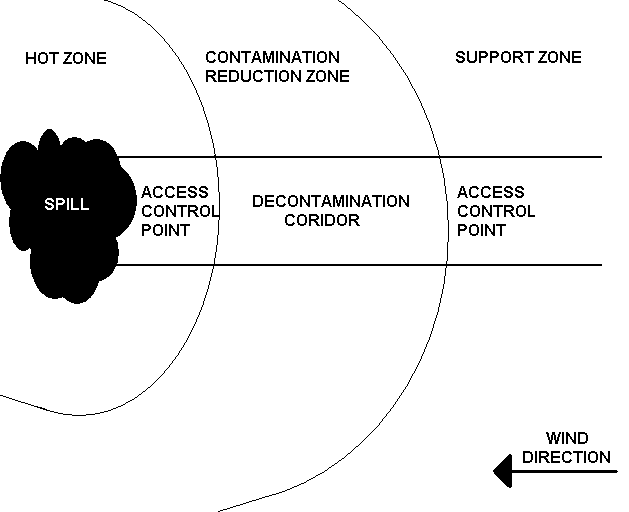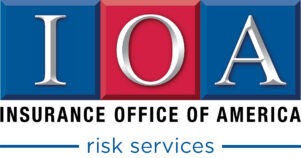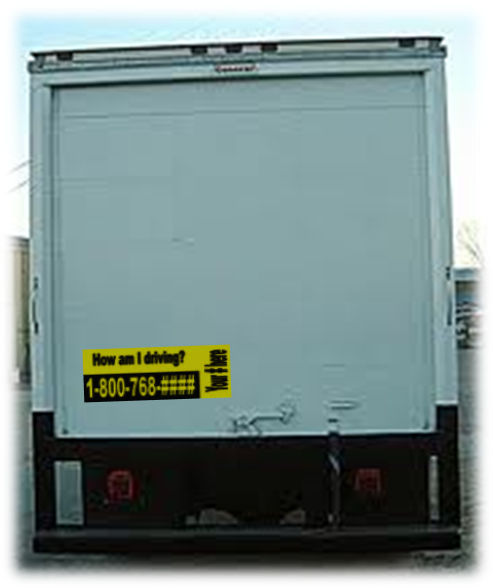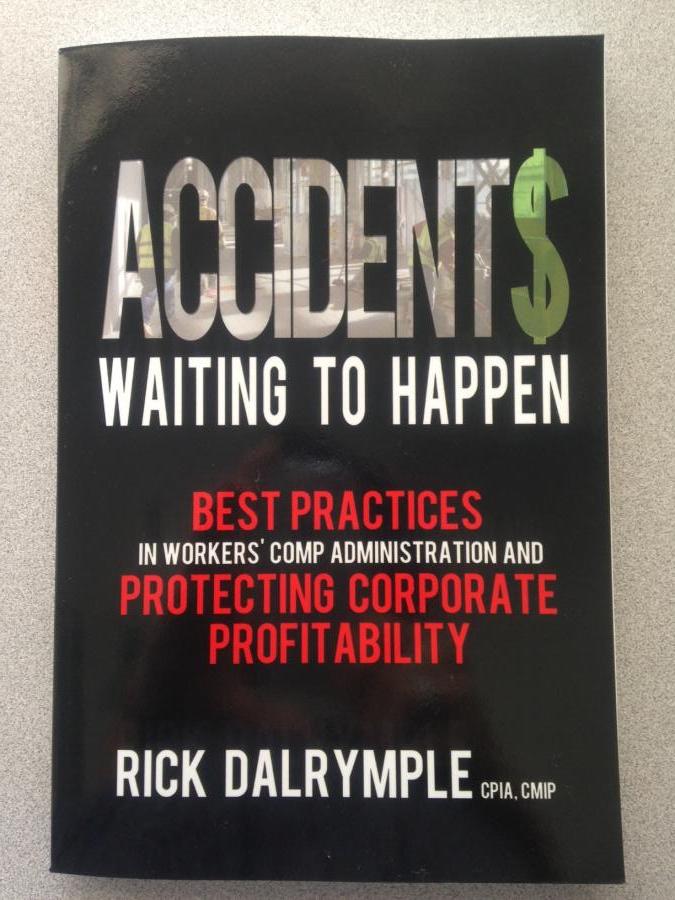Decontamination From An Emergency Spill Response
One of the goals to any emergency-spill response plan is to limit the amount of contamination spread from the site. Any person or piece of equipment involved in a spill cleanup process can be contaminated. Before entering the spill area, steps should be taken to ensure the equipment and workers leaving the site have been decontaminated. OSHA defines decontamination in the hazardous waste operations and emergency response (HAZWOPER) standard, 29 CFR1910.120 (a)(3), as the removal of hazardous substances from employees and their equipment to the extent necessary to preclude the occurrence of foreseeable adverse health effects.
Proper Setup of a Decontamination Area
An emergency spill-response site is broken down into the following areas (see diagram below):
- Hot Zone: Spill area, where all major spill cleanup operations will be performed.
- Support Zone: Location of the command post, which should be free of any contaminates. This area may be referred to as the Cold Zone.
- Contamination-Reduction Zone (CRZ): Buffer between the Hot and Support Zones and location of the Decontamination Corridor. This area may also be referred to as the Warm Zone.
- Decontamination Corridor: Area used to clean up workers and equipment leaving the Hot Zone. However, it is important to note that the Decontamination Corridor is not only used for cleanup. This area should be the only access point in and out of the spill work area.

The Contamination-Reduction Zone and Decontamination Corridor should be set up before work begins in the Hot Zone. Location of this zone depends on many factors:
- Levels of contaminate: Determine whether the desired area is safe for monitoring the contaminate.
- Wind direction: Determine wind direction to ensure airborne concentration of the contaminate; the work area should be upwind of the spill.
- Access and egress: Ease of access to the Hot Zone can reduce the amount of contamination spread.
- Weather: Inclement conditions can hinder decontamination. Set up indoors or use an encapsulated decontamination system when necessary.
- Topography: The Contamination-Reduction Zone should not be downhill from the Hot Zone, near streams or waterways.
- Proximity to hazards: Although it is important to be close to the spill, the Contamination-Reduction Zone should be a safe distance from any hazards to help ensure that decontamination workers are not harmed in case of an explosion or other chemical release.
Physical vs. Chemical Decontamination
You can remove contaminates through physical or chemical methods.
- Physical decontamination is the process of scrubbing, scrapping, diluting, absorbing or vacuuming contaminate off of a worker or equipment. This is commonly used if the contaminate is a particulate hazard that can be rinsed off easily.
- Chemical decontamination involves neutralizing, dissolving or degrading the hazard of the contamination to make it less harmful through decontamination solutions.
Proper Decontamination Procedures
Given that no two spill responses are the same, the equipment and setup of the decontamination site should be tailored to the specific hazards of the site. This might include variations on the method, number of steps required, and types of decontamination equipment used.
Regardless of these variations, there are a few general guidelines you should follow:
- PPE of the decontamination workers: Any workers who are involved in the decontamination process should wear personal protective equipment (PPE) that is the same level of the Hot Zone workers, or at minimum, one level lower.
- Containment of decon solutions: Physical or chemical decon might require water or other decontamination solutions. In the cleaning process, the used solution might contain sufficient levels of contamination that would classify it as hazardous. Containment should be set up to collect this rinsate and it should be disposed of in accordance with federal, state and local regulations.
- Head-to-toe decon: Decontamination of any worker should begin at the head, working to the toes. Special attention should be given to areas that might be more soiled (hands, feet, etc.) and areas where contamination might collect, such as creases in the suit, underarms, etc.
If you want more information on HazWoper training or spill response plan development contact Randy Free. 407-353-8165 or email him at rfree[at]safetylinks.net







